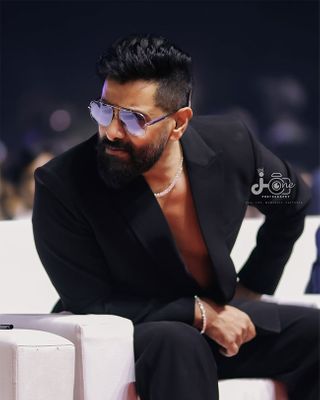Slumdog Millionaire Movie Review
Danny Boyle's stiflingly and oppressively visceral film "Slumdog Millionaire" is above all about the realisation that most slum dwellers in Mumbai have no hope whatsoever of escaping their wretched existence. In the end, the movie seems like one giant heap of rotting and fetid urban squalor from which emerges a momentary ray of hope in the form of its protagonists - Jamal Malik (Dev Patel) and Latika (Freida Pinto).
Even though the movie's denouement comes with Jamal wining Rs.20 million on the Indian version of "Who Wants to be a Millionaire?" as well as his childhood love Latika, you get a sinking feeling that the rest in their world have no prospect of unshackling the iron grip of misery on their lives.
It would be stating the obvious to evoke Dickensian parallels while watching the irredeemably cruel world of vicious adults preying on unsuspecting children and turning them into beggars. I was particularly struck by the clever use of the famous devotional song by the great poet Surdas "Darshan Do Ghanshyam Naath" while blinding a child singer's eyes by pouring acid to make his begging much more effective.
Overall "Slumdog Millionaire" works exceptionally well as a frenzied and largely heartless narrative of Mumbai's slum life if one disregards some contrivances. The sudden burst of anti Muslim rioting, which is always a possibility on the streets of some Indian cities, came across as gratuitous and distinctly out of place.
It is understandable that capturing the relentless onslaught of cruelty of life in Mumbai's slums is a huge challenge for any director, particularly for one who had no idea about it prior to this movie. But the lives of Jamal and those around him are so bereft of anything even remotely edifying that one cannot but question Boyle's approach.
Having observed Dharavi, Asia's largest slum in the heart of Mumbai, which is obviously the inspiration for the movie, I do not really blame Boyle if he hurls a plate full of decaying entrails at you.
Not having read Vikas Swarup's book "Q & A" on which the movie is based, I am not quite sure if the book is so stark and unsparing of Mumbai. For Boyle to make it work for his primary audiences in the West, he had to light every tail on fire in a manner of speaking.
As if the lives in Mumbai's slum is not harrowing enough in itself, Boyle has a scene of Jamal as a little boy inside a ramshackle toilet hearing of a helicopter carrying Indian cinema's biggest icon Amitabh Bachchan landing in the vicinity. The toilet's keeper, another young boy, locks up the toilet out of sheer cussedness. The only way out for Jamal, who for some strange reasons carries a picture of Bachchan's with him to the toilet, is to escape by jumping into the pit below full of faeces. He does jump into the pit and comes out sodden with excrement and runs to Bachchan for his autograph. So foul and horrendously dirty he looks that the other screaming fans are forced to let him through the mob. There was tragic humour in there somewhere, but it took me a while to smile.
The plot is quite brilliantly crafted by Simon Beaufoy although I am not sure how much of Swarup's structure is faithfully retained in the final product. I really wonder if either Boyle or Beaufoy would know about "Darshan Do Ghanshyam". They had to have roped in some Indian intelligence on that. Jamal's journey from the degrading slums to the winner of "Who Wants to be a Millionaire" is replete with so many examples of cruelty, greed, viciousness and inhumanity that one might be forced to wonder whether all that can happen to a single human being.
Unfortunately, it happens to hundreds of thousands of them on a daily basis in such slums.
The film's cast works exceptionally well. Dev Patel, a British actor of Indian heritage, brings a charming callowness to his performance that may not work elsewhere. The young Jamal played by Ayus Mahesh Khedekar also brings a powerfully engaging rawness.
Madhu Mittal as Jamal's adult older brother Salim and Azharuddin Mohammed Ismail as the child are outstanding as characters who have fallen on the wrong side of the divide. Frieda Pinto and Rubina Ali as the adult and child Latika, respectively, measure up quite well.
Irrfan Khan, regarded as one of India's finest actors, as a police inspector is reliably credible as always. Anil Kapoor, one of the biggest Hindi cinema stars, as a self-absorbed and swaggering host of the TV show is an absolute delight. He gives the impression that he just walked into the role without any problems at all.
A.R. Rahman's music, as always, defies classification, which is a good thing. The film's conclusion with a song and dance number with a thousand extras at Mumbai's VT station (now Chhatrapati Shivaji Terminus) seemed odd since I saw the film after the wrenching terror strikes there Nov 26.
Anthony Dod Mantel's cinematography, although not my favourite style, gives the movie that visceral feel that may not have worked with pretty and well structured frames. This is a personal weakness and I am not finding faults with Mantel's work, but it was a pity not to see even one memorable shot in the entire movie.
Of course, Mantel's brief from Boyle ought to have been to capture the sheer heartlessness of slums. However, it would not have hurt to produce a couple of brilliant shots, especially while filming scenes at the Taj Mahal.
Chris Dickens' editing too had to keep pace with the mood of the film and it does. Once again, it is a matter of personal taste. I did not quite like it. All this is nitpicking in a movie that wallops you in the face with an unvarnished piece of log that could well be floating in one of the cesspools in the slum.
OTHER REVIEWS









